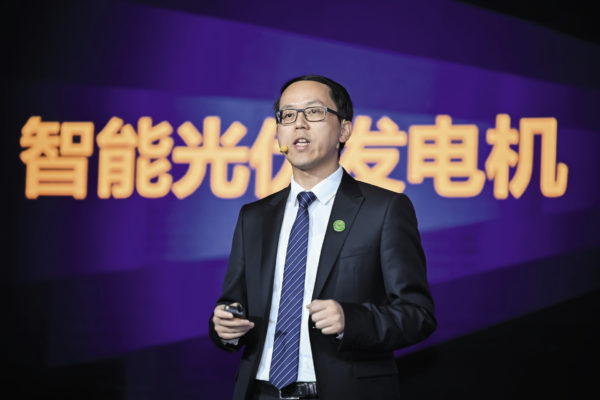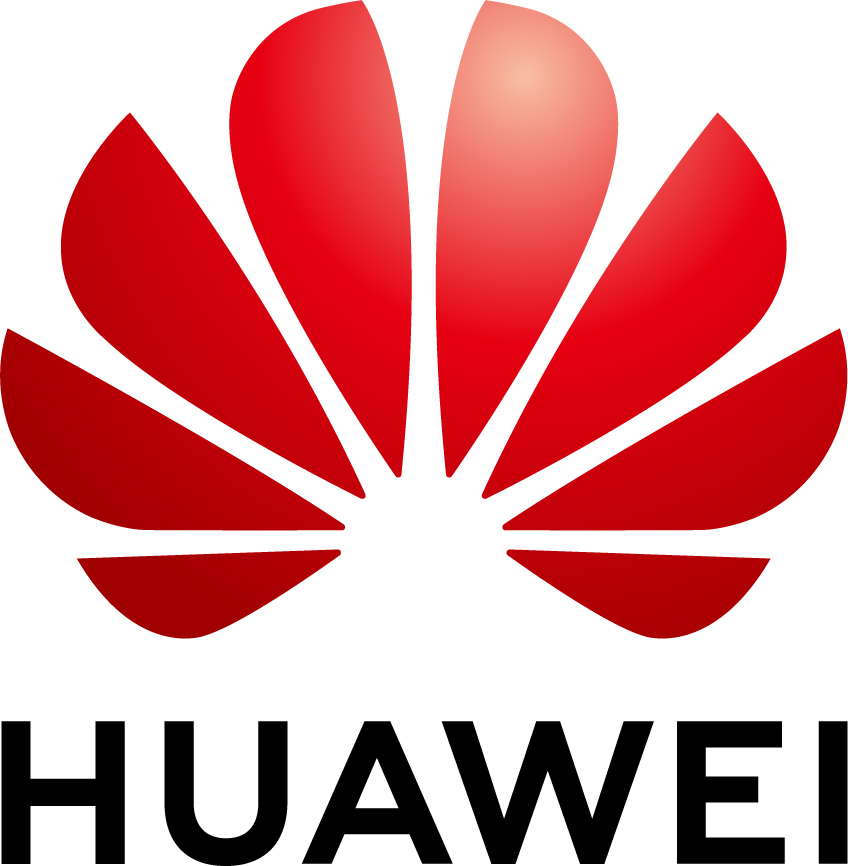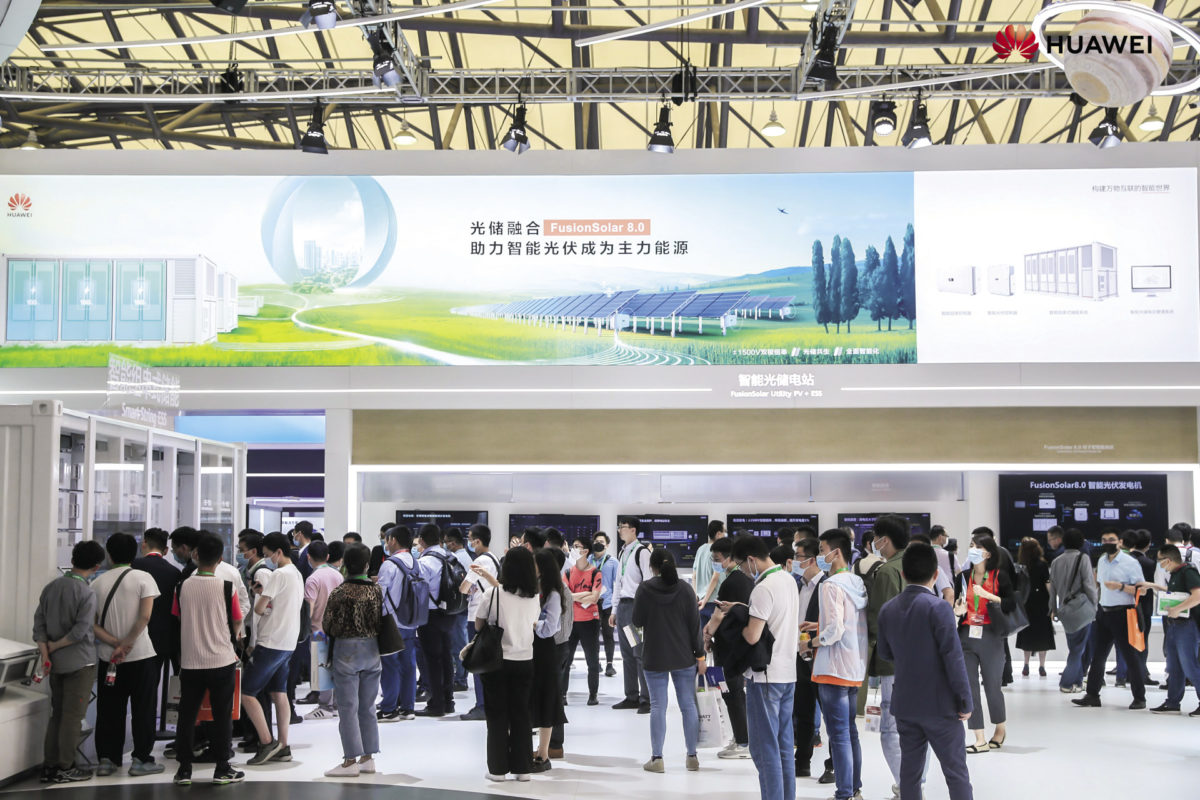From Huawei Special Edition 2021
Let us first take a step back to the original FusionSolar solution in 2013. Since then, solar PV has evolved rapidly, improving single- and dual-axis tracking technology, bifacial high-powered modules, and now competitive battery storage in the utility-scale sector. How does Huawei’s latest FusionSolar All-Scenario PV & Storage Solution handle this complexity to deliver lower costs?

Chen Guoguang, the president of Huawei Smart PV: This year, we launched FusionSolar All-Scenario PV & Storage Solution, which offers the advantages of “smart string” design, such as intelligence, modularity, multi-MPPT, high protection and so on, and provides a completely new power electronics architecture, creating the world’s first Gemini ±1500V design. This architecture design can help to support larger sub-arrays and higher voltages, further reducing LCOE by up to 7%. It can even enhance the power grid and can also adapt to large-scale wind + solar + storage projects. It will redefine PV plant standards in various market segments.
Our new solution integrates our smart string energy storage solution and is compatible with AC and DC coupling. It uses intelligent PV+storage collaborative control algorithms to realize synchronous characteristics to improve grid stability. The Smart PV Generator allows PV to no longer be a fluctuating resource, but instead to become a stable voltage source. It further integrates AI technology and couples with modules, trackers and the power grid, providing an end-to-end system covering multiple scenarios such as standalone PV, PV+storage, microgrid, and pure storage, to create a comprehensive and intelligent All-Scenario PV & Storage solution.
It has three major differences compared with traditional solutions. First, the world’s first “bipolar” string: the use of “Smart PV controller” and “Smart PCS” dual controllers, through the “±1500V” design on the DC side, to achieve the “3000V” architecture. While achieving higher voltage, it can also meet all existing standard requirements related to electrical and safety regulations for PV power plants, achieving a larger sub-array (up to 8.8 MW), support for larger current components, and higher DC to AC ratios (up to 1.8).
Second is the coexistence of PV and storage. The PV+storage coordinated control algorithm turns the PV system from an uncontrollable current source that cannot be stored into a stable voltage source, creating the PV generator. The new Huawei smart string energy storage system, distributed energy storage architecture, fully modular design, pack-level optimization, rack-level optimization, and other innovative technologies will ultimately achieve a levellized cost of storage (LCOS) reduction of more than 20%.
Third is full intelligence: A variety of advanced ICT technologies such as AI and cloud are catalyzed and organically integrated with PV. Modules, trackers, cables, array controller, energy storage, grids and inverters are fully coordinated and fully coupled, including the latest intelligent IV 4.0 diagnostic technology, DC MUBS, intelligent PID protection, SDS algorithm, intelligent grid-connecting algorithm, etc. The combination of these fully releases the potential of each string, creating a “zero inspection” O&M experience, and stronger grid support capabilities, so that power plants have three-dimensional awareness creating an open, efficient and intelligent PV+storage system.
Energy storage has been a key topic in the PV industry and a lot of companies are entering into this arena. What does Huawei bring to the table when it comes to energy storage?
Energy storage is an important foundation and key technology for building a new energy system with renewables as the main resource, in order to transition to a green and low-carbon energy system, achieving the goal of “carbon neutrality” and ensuring energy safety.
In the field of energy storage, Huawei has accumulated more than 10 years of R&D experience and the global deployment of 5 GWh+ in lithium battery projects. This time Huawei is bringing a full-scenario smart string energy storage solution.
In the traditional energy storage solution, modules are connected in series into a rack, and multiple racks are connected in parallel. Thousands or even tens of thousands of modules are coupled with each other. If one module fails, it will affect the others.
Our solution features battery pack-level and rack-level optimization. The solution can achieve more refined management, with an accuracy of no more than a dozen batteries, which is hundreds of times higher than the traditional solution. Besides, the refined management can achieve precise management of each pack with optimized depth of charge, which improves the available power of the system.
On the other hand, this innovative design can support the mixed use of new and old batteries and the phased charging mode, saving customers on their initial investment. Meanwhile, it is equipped with fully modular design, including power conditioning system (PCS), air conditioning and so on, much improved system availability, as well as simplified operations and maintenance. The modular air conditioner realizes a distributed temperature control layout, the temperature equalization effect is far superior to the traditional solution – the temperature difference is reduced by more than 10 °C, and the battery life is greatly improved.
Huawei attaches great importance to the safety of energy storage systems. Through the “pack-level and rack-level optimization and management” design, the system can achieve accurate management of battery packs, which can accurately isolate faulty modules and improve system safety. At the same time, as a leader in advanced technology in the ICT industry, through intelligent and digital technologies such as cloud, battery management systems and big data, faulty batteries can be accurately identified with red flags of fire hazards, and system-level and active safety can be ensured.
More from our partners
Huawei’s smart string energy storage solution increases the discharge capacity, reduces O&M costs, ensures safety and reliability, and achieves a 20% reduction in LCOS, helping to build a new energy system with renewables as the main source.
What do you think about future energy trends? Based on its very impressive ICT track record, Huawei has become a leader in advancing digitalization in the power sector. We have also heard the big news that Huawei’s digital power business is now independent. Could you please elaborate what this means for your PV customers? And what can we expect from the Huawei Digital Power business in the future?
We believe that there will be three major trends in the future. First, we are progressing toward the fourth industrial revolution and accelerating our entry into the intelligent world. Second, carbon neutrality accelerates the energy transition. In the future, the world will build a clean, low-carbon, safe and efficient energy system. And third, renewable energy will become the main energy source. The integration of energy and information technology has become inevitable. In the future, new energy systems will move toward high transparency, two-way interaction, intelligent and efficient, plus comprehensive digital and intelligent technology.
Huawei has more than 30 years of deep understanding in the fields of digital technology and energy technology. The development direction of Huawei’s digital energy is to reduce emissions, accelerate the energy transformation, and realize a zero-carbon and smart society through technological innovation. For Huawei digital power, it would be one cloud plus four application scenarios and five root technologies, and all of that means an open ecosystem.
It integrates technology innovations such as electronic, thermal, energy storage, cloud and AI technology, and ICT technologies. We use “bits manage watts” by leading the digitalization of energy to build a zero-carbon intelligent society.
For our solar customers, we are aiming to build a full ecosystem, end-to-end energy solution. Not only in energy generation, but also in energy storage and consumption, further lowering the LCOE to enable increasing PV grid parity and PV+ storage grid parity. Through the integration of energy and information flow, an open energy cloud system, and an open technology ecosystem, we will enable renewable energy to become the main energy source.
Success is secured when people put their heads together. We hope to continue to innovate and create greater values for our customers to make technology benefit all.
Ever since Huawei shipped its first solar inverters in 2013, the company has moved fast to become a leader in the global solar industry, climbing to the top spot in inverter shipments by 2015. Huawei has also gained a reputation for rapid innovation. Can you tell us what new solutions and products we can expect from Huawei this year?
This year we will bring a disruptive solution to the industry. We refer to this solution as the “Smart PV Generator,” to capture the wide range of smart photovoltaic generation applications covered by the solution. This includes large ground-mounted, C&I, and residential installations. It provides four major values: lower cost of electricity plus enhanced power grid plus comprehensive intelligence plus system-level safety.
Its main objective is to help the transition from PV to PV+storage, from traditional power generators to smart PV generators, turning the uncontrollable and non-stable current sources of PV to stable voltage sources. Instead of passively following the condition of the power grid, the Smart PV Generator actively enhances and supports the power grid, achieving a balance of energy supply and demand between randomly fluctuating load and power sources, and thereby building a new power system with renewables as the main source.
In terms of safety, Huawei has also created more innovations. Let me run through them. First is safe and reliable: in the scenario of large-scale, ground mount power plants, we pioneered intelligent string disconnection on the DC side to achieve active safety. The AC output adopts Huawei’s patented technology with zero arcing and high safety standards; the medium voltage side adopts a vacuum circuit breaker to ensure the end-to-end safety of the entire power plant. In the C&I and residential scenarios, we use key innovative technologies such as AFCI (arc fault circuit interrupter), fast voltage 0V shutdown, and AI internal short-circuit detection to achieve passive safety to active safety.
In addition, we are also introducing a full-scenario smart string energy storage solution. In traditional energy storage solutions, chemical differences in battery modules result in mismatches, causing problems such as reduced capacity, degradation, O&M cost, and safety issues, and it is difficult to support large-scale applications of energy storage.
Huawei deeply integrates its power electronics with energy storage technology and uses the controllability of power electronics to solve the inconsistency of lithium batteries. Pack-level optimization allows for independent charging and discharging of battery packs, while rack-level management avoids parallel mismatch between battery racks. Finally, the modular design of air conditioner and PCS ensures the system is efficient and reliable, creating smarter and safer string energy storage solutions with lower LCOS.
This content is protected by copyright and may not be reused. If you want to cooperate with us and would like to reuse some of our content, please contact: editors@pv-magazine.com.



By submitting this form you agree to pv magazine using your data for the purposes of publishing your comment.
Your personal data will only be disclosed or otherwise transmitted to third parties for the purposes of spam filtering or if this is necessary for technical maintenance of the website. Any other transfer to third parties will not take place unless this is justified on the basis of applicable data protection regulations or if pv magazine is legally obliged to do so.
You may revoke this consent at any time with effect for the future, in which case your personal data will be deleted immediately. Otherwise, your data will be deleted if pv magazine has processed your request or the purpose of data storage is fulfilled.
Further information on data privacy can be found in our Data Protection Policy.